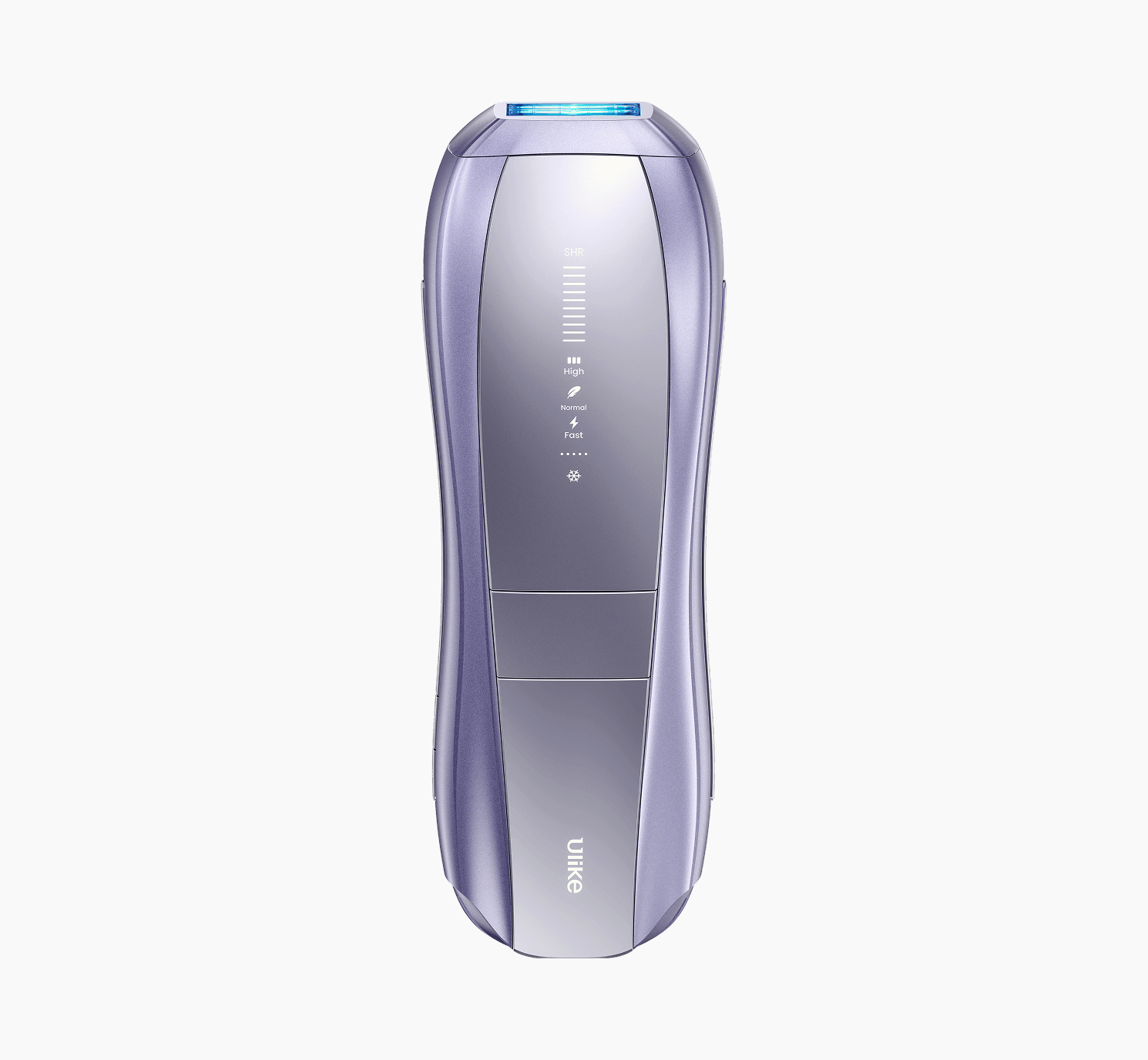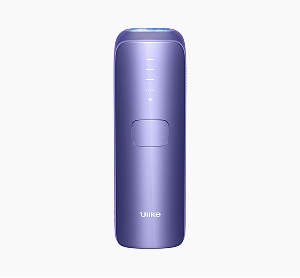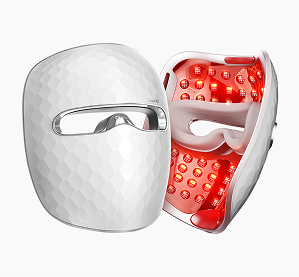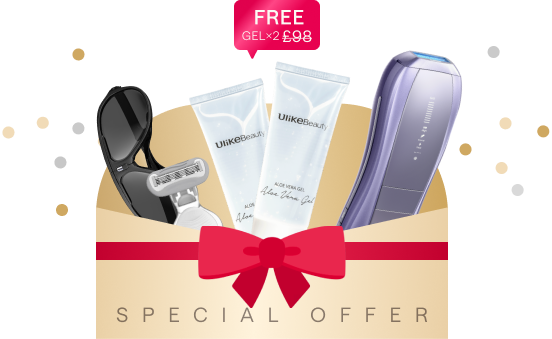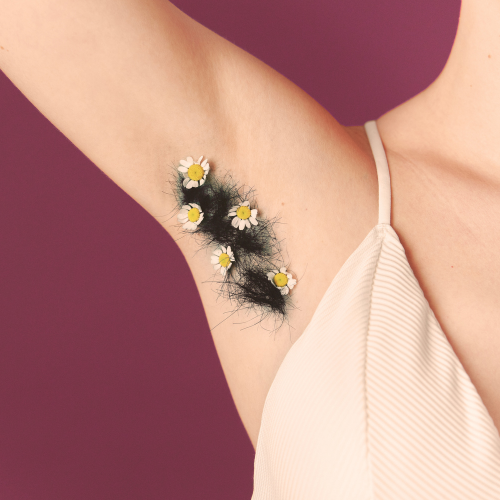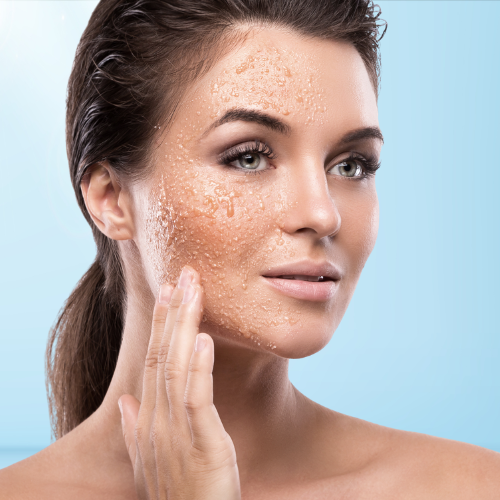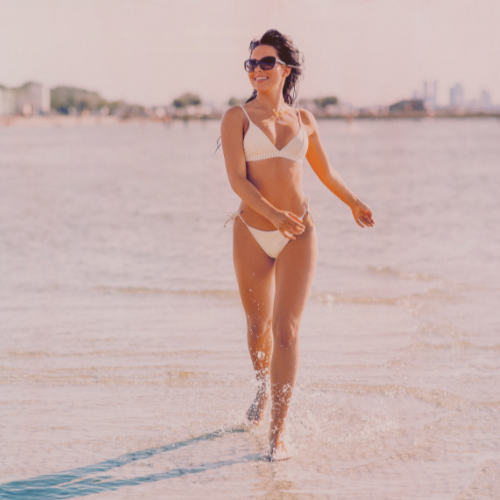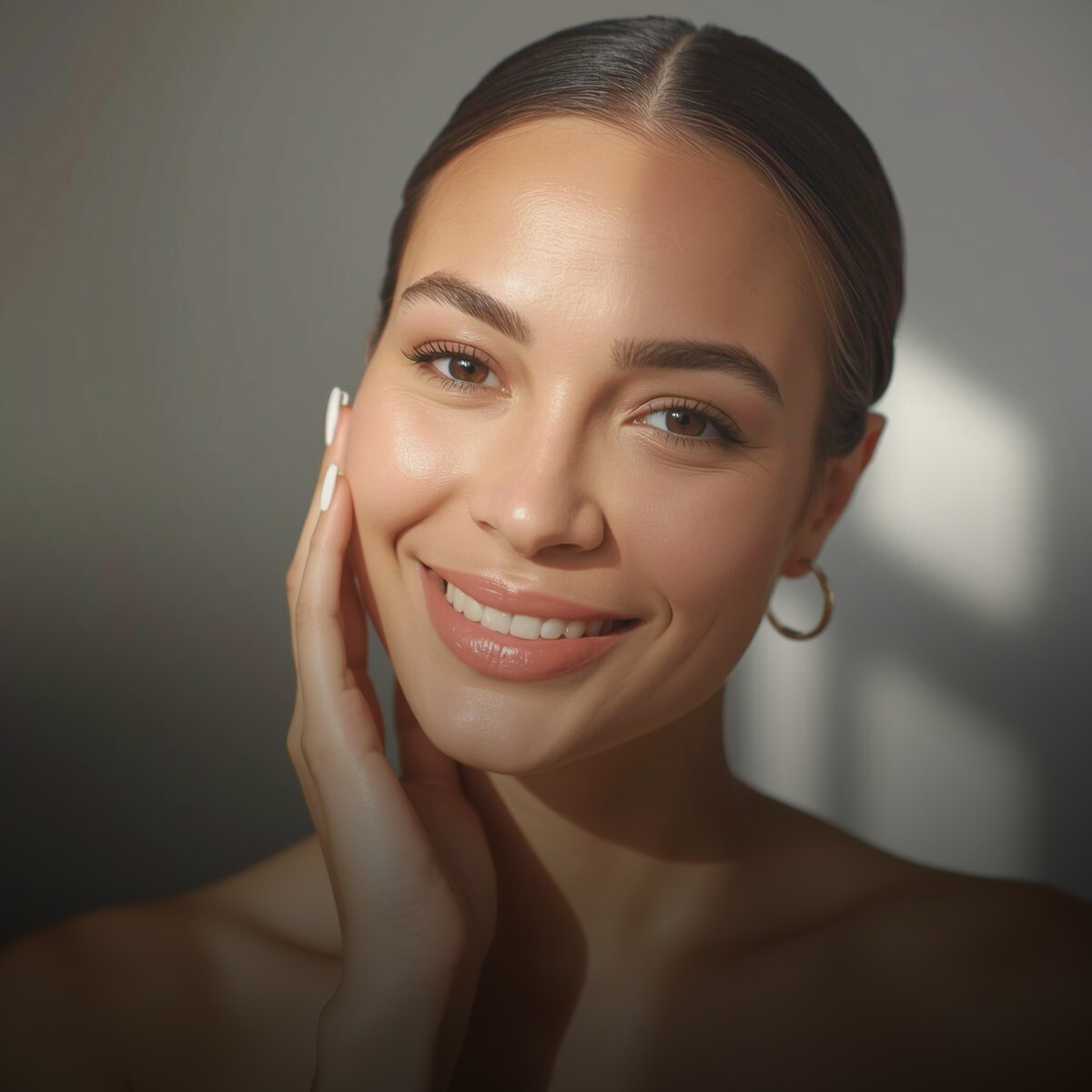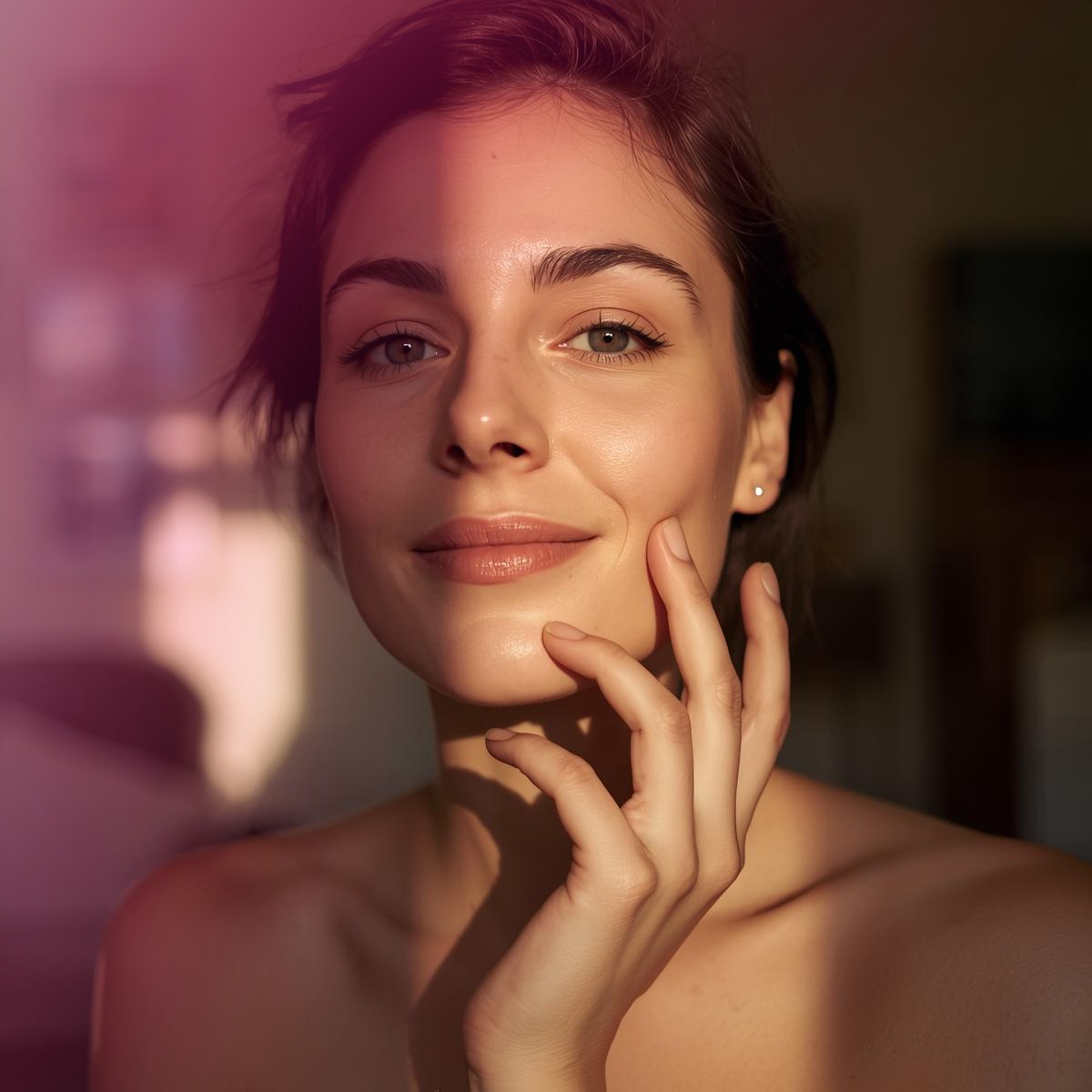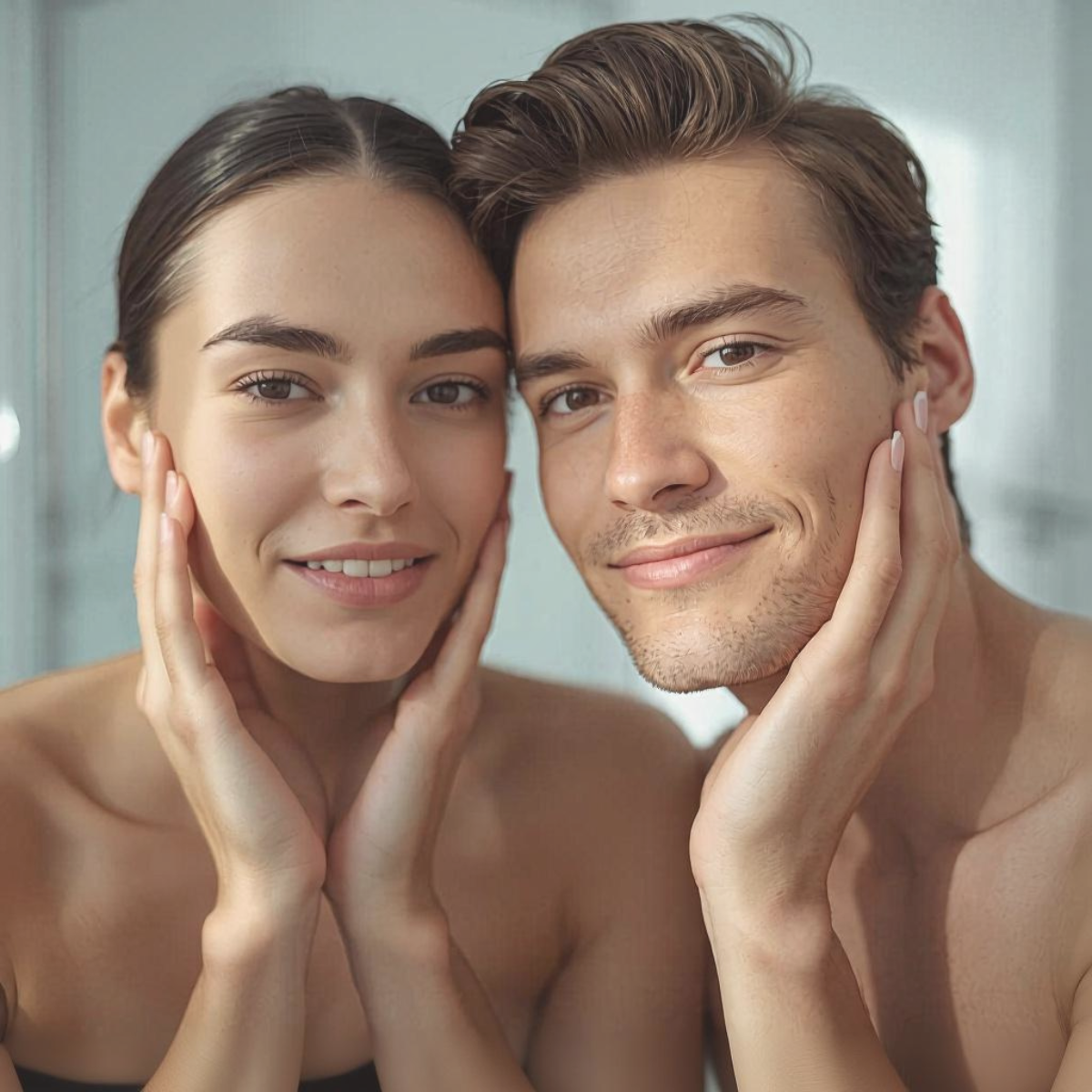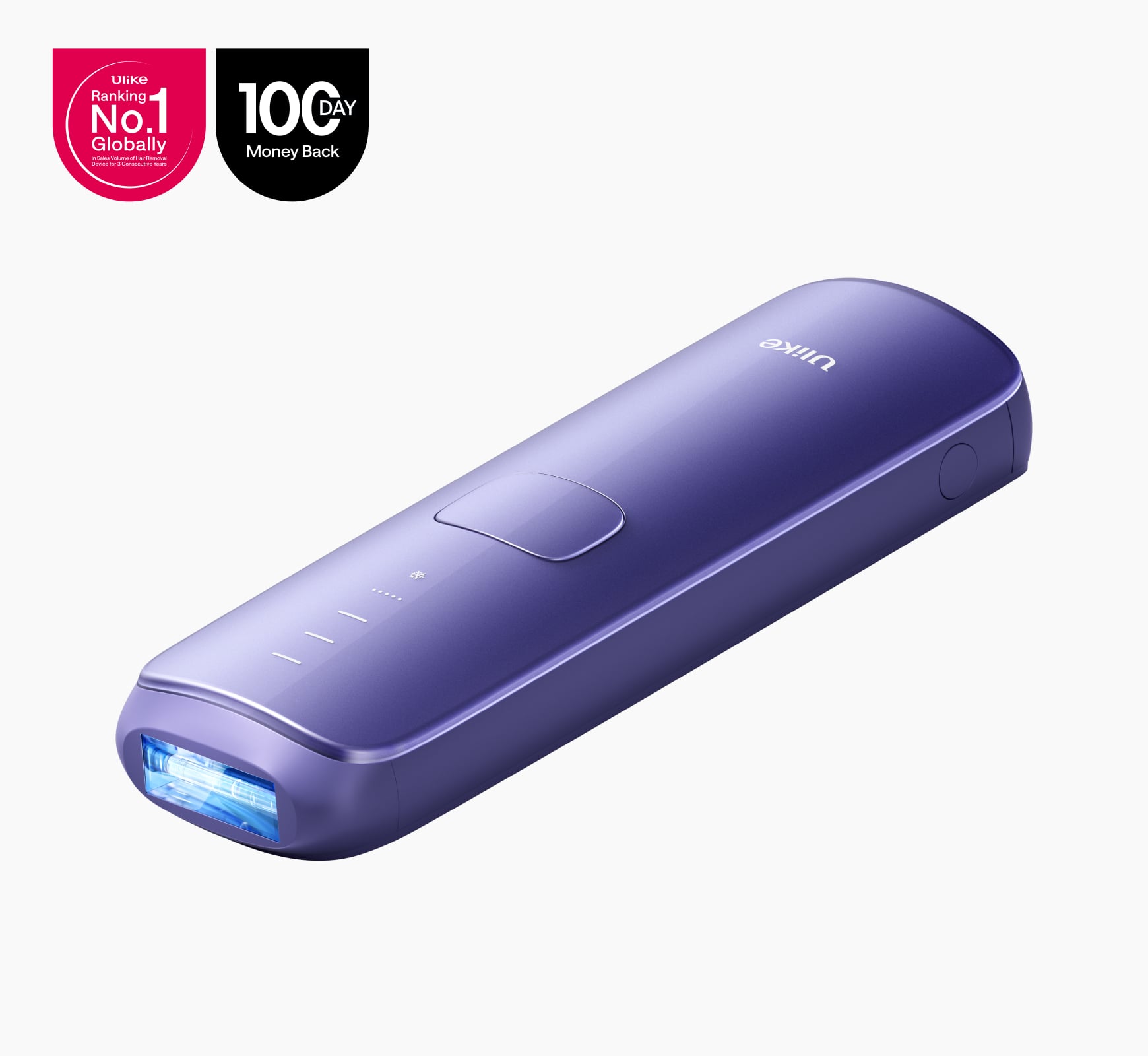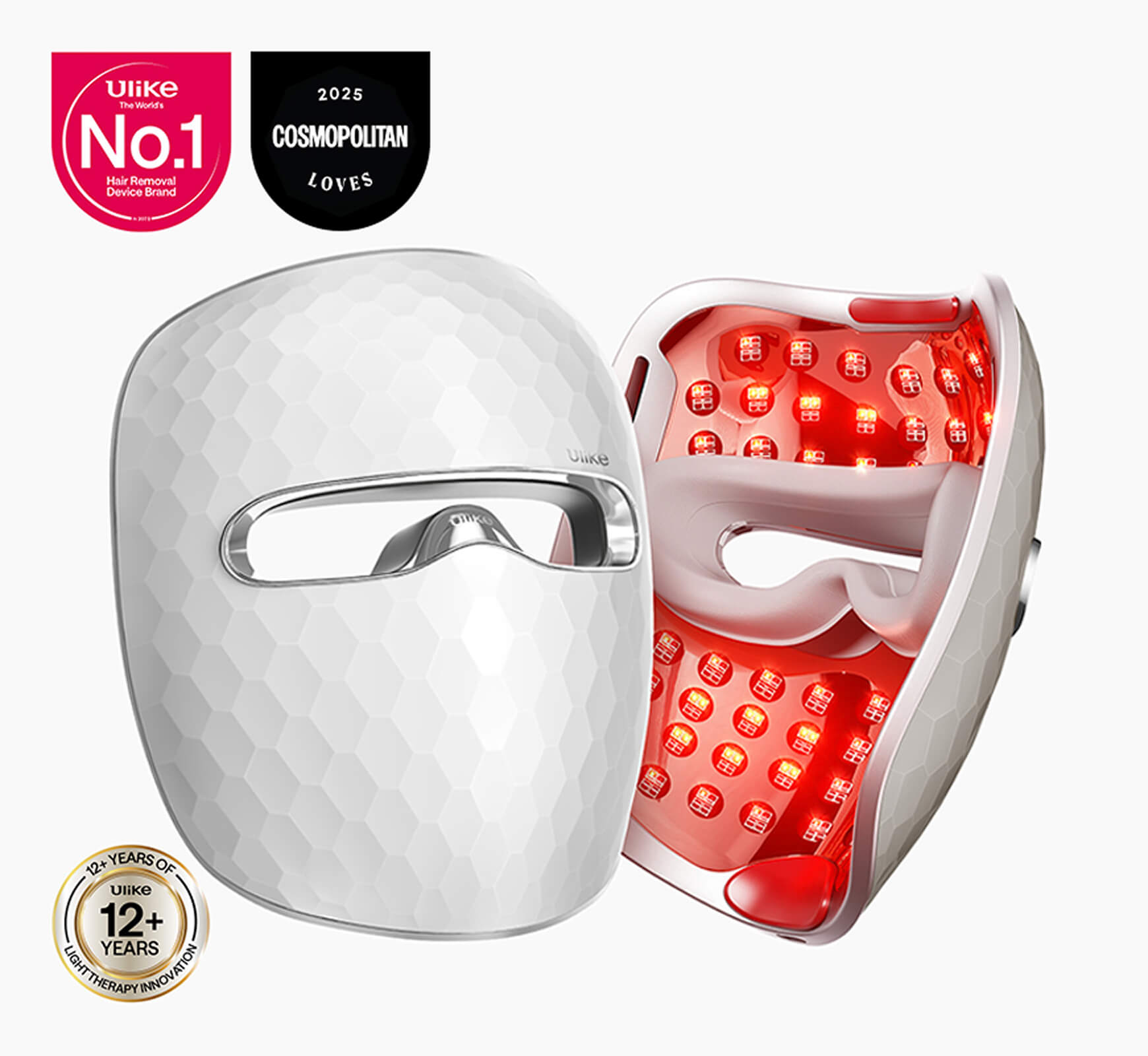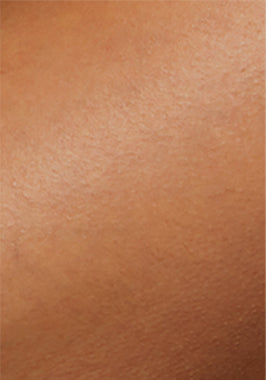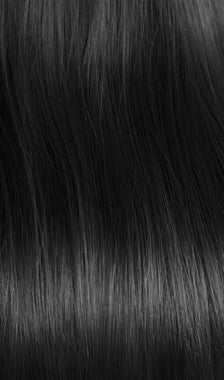Navigating Laser Hair Removal with Rosacea: A Realistic Guide for Sensitive Skin
If you're one of the many women in the UK living with rosacea, especially after 30, you’re likely all too familiar with the constant redness, flushing, visible veins, and skin that seems to react to just about everything. Managing your skin can feel like a daily balancing act.
It’s no wonder that laser hair removal might give you pause. The idea of smooth, hair-free skin is appealing, but the worry of flare-ups or worsening sensitivity can be a real barrier.This guide focuses on laser treatment for rosacea and how to approach laser hair removal safely, especially if your skin tends to overreact.
You’ll gain practical insight into selecting the right laser types, the importance of patch tests, and the role of skin consultations before treatment. We'll also walk you through gentle aftercare and what to expect from professional clinics, whether you're in London, Glasgow, or anywhere in between.
The information here draws on trusted dermatological research and expert opinion. It’s here to support your decisions, not to replace medical advice, so always speak to a qualified professional about what’s right for your skin.
Rosacea and Laser Sensitivity: What You Should Know Before Treatment
Laser therapy can help manage certain rosacea symptoms, but it’s not one-size-fits-all. If your skin reacts with flushing, stinging, or visible veins, it’s worth knowing how it might respond to laser energy before committing to treatment.
Knowing Rosacea and Your Triggers
Rosacea comes in four main subtypes:
- Erythematotelangiectatic – persistent redness and broken blood vessels
- Papulopustular – red bumps that mimic acne
- Phymatous – thickened, bumpy skin, often around the nose
- Ocular – irritation, redness, or dryness around the eyes
Living in the UK, you’re likely affected by region-specific triggers: cold winter winds, high humidity, rapid shifts between indoor heating and outdoor chill, and even muggy summer days. These environmental factors often lead to flare-ups that make your skin feel hot, tight, or raw, making cosmetic treatments more complicated.
How Laser Can Affect Inflamed Skin
Laser and IPL (intense pulsed light) treatments rely on heat to target broken blood vessels or reduce unwanted hair. But for those with rosacea, this heat can do more harm than good, worsening inflammation, darkening pigmentation, or triggering redness that lingers for days.
That’s why specialists often use “vascular-safe” devices like the Nd:YAG laser, pulsed dye laser (PDL), or KTP laser. These options offer longer wavelengths and more precise targeting, meaning they can treat visible vessels with less surface irritation. They’re gentler on reactive skin, and clinical studies have shown up to 50–75% improvement in facial redness after a series of treatments.
Why a Personalised Assessment Is a Must
Laser treatment isn’t something to wing when rosacea’s involved. A reputable practitioner—ideally one with experience treating rosacea, should assess your skin type, flare-up triggers, medication, and skincare habits. NHS guidelines also recommend patch testing, proper aftercare (like avoiding heat and harsh products), and using SPF 50+ daily, rain or shine.
If your rosacea is currently active or you’ve got especially sensitive skin, it’s best to hold off. Trusting a trained professional and taking the time to prep properly can help you avoid setbacks and get the safest results possible.

Laser Hair Removal and Rosacea: What You Need to Know
If you’re thinking about laser hair removal and you’ve got rosacea, it’s perfectly normal to feel cautious. Your skin’s already reactive, and the last thing you want is to trigger a flare-up. But with the right technology and a tailored approach, you can absolutely enjoy the benefits of long-term hair reduction, without compromising your skin’s health.
The Upside (and Downside) for Rosacea-Prone Skin
Laser hair removal gives you smoother skin, fewer ingrown hairs, and longer-lasting results compared to shaving or waxing. But if your skin tends to overreact to heat or light, you’ll need to take a few extra steps. Active rosacea, especially with visible redness, broken capillaries, or stinging, can increase your risk of side effects like prolonged redness, inflammation, or pigmentation changes.
Even when your skin’s relatively stable, some laser treatments might still cause irritation or a slower healing process. That said, when you use the right device with an experienced practitioner, you can keep risks low and results high.
IPL and Rosacea: A Reconsidered Approach
You might’ve heard that Intense Pulsed Light (IPL) isn’t safe for rosacea, but that’s not the full story. Recent studies suggest that IPL can actually help reduce redness and visible veins, as long as it’s used correctly.
A 2019 study in the Journal of Cosmetic and Laser Therapy found that over 70% of rosacea patients saw a visible improvement in redness after three to five IPL sessions. Another review published in Lasers in Medical Science (2020) backed IPL’s role in treating both vascular symptoms and unwanted hair, especially when practitioners use lower energy settings and appropriate filters.
Here’s the catch: not all IPL devices are suitable. Look for systems with built-in cooling and filters that target the 500–600 nm range. This helps calm inflammation and reduce the chance of a flare-up. Avoid IPL during active rosacea episodes, and make sure your clinic understands how to customise settings for sensitive skin.
Active vs Controlled Rosacea: Why Timing Matters
You’ll get the best results and avoid unnecessary discomfort if your rosacea is calm before starting any treatment. If you’re dealing with active symptoms like burning, flushing, or visible redness, hold off until your skin settles.
A good practitioner won’t just jump straight in. They’ll ask you about your rosacea subtype, your known triggers, any medications you’re on, and the skincare products you’re currently using. That initial consultation makes all the difference in how your skin responds.
What to Expect from a Proper UK Clinic
Choosing the right clinic is just as important as choosing the right laser. A reputable UK provider should:
- Take the time to understand your rosacea history and trigger patterns
- Perform a patch test to see how your skin reacts
- Give you clear aftercare instructions, usually things like avoiding hot showers, active skincare ingredients, saunas, and sun exposure for at least 48–72 hours
- Offer follow-up appointments to monitor how your skin is healing
They should also have specialised medical indemnity insurance that specifically covers laser treatments on pre-existing conditions like rosacea. Don’t hesitate to ask for confirmation. It's your right.
And under General Medical Council (GMC) guidance, clinics must get your informed consent before proceeding with any cosmetic treatment. That includes a detailed breakdown of potential risks and written confirmation that you’re comfortable moving forward.

Gentle Laser Therapy Options for Rosacea-Prone Skin
If you’re living with rosacea and thinking about laser treatment for rosacea, whether you want to tone down redness or deal with unwanted hair, it pays to know which options are gentle enough for your skin. Some lasers can help soothe inflammation and shrink blood vessels, while others safely tackle hair without aggravating your skin. The key is choosing the right approach for your specific needs.
Pulsed Dye Laser (PDL): Calming Redness and Broken Veins
Pulsed Dye Laser (PDL) is often the go-to treatment for reducing facial redness and visible blood vessels, especially in erythematotelangiectatic rosacea. It works by delivering short bursts of light (around 585–595 nm) that specifically target the blood in dilated vessels, helping them fade without harming the surrounding skin.
You might notice mild swelling or redness for a day or two after treatment, but recovery is usually quick. Most people see solid improvement after one to three sessions, spaced four to six weeks apart. In private UK clinics, a session typically costs between £200 and £600, depending on the treatment area.
If rosacea is seriously affecting your quality of life, you might qualify for PDL through the NHS on a dermatology referral. Just bear in mind the waiting list. Appointments can take anywhere from 12 to 18 weeks to come through.
IPL for Rosacea in the UK: Not Off the Table
Intense Pulsed Light (IPL) isn’t a laser in the strict sense, but some UK clinics still use it to treat rosacea, especially for generalised redness or sun damage. It sends out a broad spectrum of light that targets pigment and blood vessels, which can be helpful for mild to moderate rosacea when used carefully.
Recent research has shifted the narrative: IPL can be safe and effective if the practitioner knows how to calibrate the settings properly. A well-set IPL device with filters that target the right wavelength (usually in the 500–600 nm range) and built-in cooling can visibly reduce redness without triggering a flare-up.
Most treatment plans involve 3–5 sessions, spaced about four weeks apart, with prices ranging from £150 to £400 per visit. At-home devices with cooling systems also exist and are in the £200 to £400 price range.
Nd:YAG Laser: The Hair Removal Hero for Sensitive Skin
When it comes to hair removal, Nd:YAG lasers (1064 nm) are your best bet if you’ve got rosacea. The longer wavelength means the laser energy goes deeper into the skin, steering clear of the surface-level blood vessels that rosacea affects most.
What really makes the difference is how clinics combine the Nd:YAG laser with advanced cooling systems . Some use contact cooling or cold air devices, while others, like the Candela GentleMax Pro, spray a fine mist of cryogen onto the skin right before the laser pulse. That can cut down discomfort by up to 70% and reduce the risk of irritation.
You’ll likely need 6–8 sessions, spaced every 4–6 weeks, to see full results. Each session typically costs between £100 and £300, depending on the area you’re treating.
Managing Discomfort and Reducing Side Effects
Let’s face it, rosacea skin doesn’t like to be pushed around. Even gentle treatments can cause a bit of sting or sensitivity. Most good clinics will offer topical numbing creams, cool air blowers, or calming post-treatment serums with ingredients like aloe vera or niacinamide. Always ask about what comfort measures they offer, because your treatment should feel as good as it looks.
NHS vs Private Clinics: What’s Covered?
Laser hair removal is considered cosmetic, so it’s not available through the NHS. But if your rosacea is causing significant discomfort or emotional distress, your GP can refer you to an NHS dermatologist. If the case is severe, you might be eligible for PDL treatment, though again, expect some waiting time.
In the private sector, expect to pay around:
- £800 to £2,400 for a full course of facial PDL
- £600+ for a package of Nd:YAG hair removal treatments (depending on the area and number of sessions)
Whatever you're hoping to achieve, less redness, smoother skin, or both, it’s important to work with someone who knows how to treat rosacea properly.
Look for clinics registered with the British Laser & Skin Association (BLSA). Don’t settle for a one-size-fits-all approach. Make sure you’re given a customised treatment plan that takes your skin’s needs, history, and sensitivities into account.

How to Prepare for Laser Therapy with Rosacea: A Safe Start
Laser therapy can really help calm rosacea, but your results depend heavily on how well you prepare beforehand. With sensitive skin, it’s not just about showing up for your appointment. It’s about giving your skin the best possible conditions to respond well. A bit of forward planning can make all the difference.
Start with a Personal Consultation and Patch Test
Your first step is always a proper consultation. When you meet with a dermatologist or qualified laser practitioner, they’ll ask about your rosacea subtype, medication, lifestyle triggers, and skincare routine. This isn’t just small talk. It helps them choose the right settings, laser type, and treatment plan for your skin.
You’ll then have a patch test, usually on an area like behind the ear or near the jaw. After the test, you’ll need to wait around 48 to 72 hours while your practitioner monitors your skin’s response. This small step helps prevent unnecessary side effects later on.
Your 4-Week Countdown to Treatment
4 Weeks Before:
- Stop using retinoids, vitamin C serums, or chemical exfoliants like AHAs or BHAs
- Switch to a simple, fragrance-free moisturiser, look for ingredients like ceramides to support your skin barrier
- Start wearing SPF 50+ every day, even when it’s cloudy, UV exposure still affects your rosacea, even on overcast days in the UK
2 Weeks Before:
- Steer clear of direct sunlight and definitely avoid sunbeds
- Pause any new skincare products. You don’t want to risk a reaction before your treatment
- Speak to your practitioner about any medications you’re on, especially blood thinners, antibiotics, or isotretinoin
1 Week Before:
- Use a gentle, non-foaming cleanser, nothing that strips your skin
- Avoid waxing, threading, or hair removal creams in the treatment area
- Take photos of your skin. I t’s a great way to track your progress
24 Hours Before:
- Shave the area you’re treating, unless your practitioner advises otherwise
- Don’t apply any products. No lotions, serums, deodorants, or make-up
- Skip alcohol, as it can increase redness and make your skin more reactive
On the Day of Your Appointment
Turn up with clean, makeup-free skin. Let your practitioner know if anything’s changed, new medications, a sudden flare-up, or even a skincare product that didn’t agree with you. These small updates help them adjust your treatment to keep it safe and effective.
Medications, Safety, and What to Expect
Certain medications can affect how your skin reacts to laser, so always double-check with your GP if you’re unsure. Common ones to flag include doxycycline, Roaccutane (isotretinoin), and anything that thins your blood.
Before your treatment begins, your practitioner should talk you through everything, from what the session will feel like to any possible side effects. You’ll go through an informed consent process, which includes signing off on:
- A review of your skin’s current condition
- The risks and expected benefits
- Your tailored aftercare plan
They’ll also take detailed notes and document your agreement to proceed. It’s more than paperwork. It’s there to protect you, keep things clear, and make sure your treatment feels just right for you.

Choosing a Qualified Laser Practitioner for Rosacea in the UK
When you’re living with rosacea, picking the right practitioner is just as important as choosing the right treatment. Your skin is reactive, sensitive, and deserves expert care, not guesswork. Laser therapy can do wonders, but only in skilled hands. You’ll need someone who truly understands rosacea, not just someone who works with a laser machine.
What to Look For in a Practitioner
Don’t settle for someone who just happens to offer laser services. You need a practitioner with medical oversight and specialist training in treating rosacea-prone skin.
Use this checklist when researching clinics:
✔ GMC or NMC registration – check if they’re listed on the General Medical Council or Nursing & Midwifery Council websites
✔ Certification from the BLSA or BMLA – the British Laser & Skin Association or British Medical Laser Association
✔ Rosacea-specific training – ask what courses or workshops they’ve done
✔ Valid medical indemnity insurance – make sure it covers pre-existing skin conditions
✔ At least two years of experience treating rosacea patients.
If they tick all these boxes, you’re on the right track.

Ask the Right Questions
Your consultation isn’t just about your skin. It’s about making sure they’re the right fit. Ask questions like:
- “How many rosacea patients do you see each month?”
- “Which lasers do you use for my type of rosacea, and why?”
- “Do you have before-and-after photos of clients with similar skin?”
- “What happens if I have a flare-up after treatment?”
- “Are you fully insured to treat rosacea and other medical skin conditions?”
Their answers will tell you everything you need to know. A qualified practitioner won’t hesitate—they’ll explain their process clearly and supportively.
Watch for Red Flags
Some clinics cut corners or overpromise to win your business. If you notice any of the following, it’s best to keep looking:
They don’t require a patch test
They offer “same-day consultations and treatment”
Their prices seem unusually cheap
They won’t show proof of training or insurance
There’s no doctor or nurse involved in the clinic
They pressure you to buy a package on the spot
Trust your instincts. If something feels off, it probably is.
Protect Your Skin. Choose Carefully
You’ve already got skin that demands a little more thought and care. Choosing a practitioner with proper training, experience, and medical backing helps you stay safe, reduces the risk of flare-ups, and gives you the confidence to move forward. The right specialist won’t just offer a service. They’ll offer understanding, support, and results you can feel good about.
Rosacea-Friendly Hair Removal: Gentle Alternatives
If laser hair removal feels like a step too far for your sensitive skin, you're not out of options. You can still keep facial or body hair under control without pushing your skin to its limits. Whether you’re in the middle of a flare-up or just prefer a gentler approach, these rosacea-friendly hair removal methods can help you stay smooth, without stirring up trouble.
Electrolysis: A Precise, Permanent Option
Electrolysis offers a great alternative if your rosacea reacts badly to heat or light. It works by sending a tiny electrical current into each individual hair follicle, destroying it at the root. That might sound intense, but it’s actually one of the safest long-term solutions for small, delicate areas like your upper lip or chin.
It’s slower than a laser because it treats one hair at a time, but if you’re looking for permanent results and your rosacea is active or unpredictable, this might be the most reliable route.
Cost in the UK: £30–£80 per hour
Best for: Small areas on very sensitive skin or during active rosacea
Threading: Simple, Chemical-Free Hair Removal
Threading has been around for centuries, and for good reason. Using a twisted cotton thread, your practitioner removes hair from the root, without heat, chemicals, or pulling at your skin. That makes it a solid choice even if your rosacea is flaring up.
It’s particularly useful for shaping your brows or tidying facial fuzz, and most UK high streets have salons that specialise in it. You’ll usually stay smooth for two to four weeks.
Cost: £8–£25
Best for: Facial hair, especially during reactive skin days
Low-Temperature or Sugar Waxing: Proceed With Caution
Waxing isn’t off the table, but you’ll need to be extra careful. Some rosacea-prone skin tolerates low-temperature wax (around 37–40°C) better than the usual high heat. Others prefer sugar waxing, which uses gentler, natural ingredients and sticks more to hair than skin.
Only try waxing when your rosacea is stable, and always patch-test a small area first. If your skin feels tight, red, or warm, give it a miss.
Cost: £15–£45 per area
Best for: Temporary hair removal when your skin feels calm and balanced
Eflornithine Cream (Vaniqa): Slow Things Down
If you’d rather avoid pulling or zapping your skin altogether, ask your GP about Eflornithine cream, also known by the brand name Vaniqa. It doesn’t remove hair, but it slows down regrowth by blocking an enzyme involved in hair production. That means less frequent hair removal and a gentler experience overall.
Apply it twice a day and give it 6–8 weeks to kick in. It’s often prescribed on the NHS for facial hirsutism and works especially well alongside other methods like threading or electrolysis.
Available via NHS prescription
Best for: Reducing facial hair growth gradually with minimal irritation
Your Rosacea Hair Removal Timeline
Knowing when to try what makes all the difference. Here’s how to match your method to your skin’s current state:
During a flare-up: Stick to gentle cleansing and prescribed rosacea treatments. Skip all hair removal
When things settle: Try threading or electrolysis on small areas
After 3+ months of stability: Talk to a practitioner about patch testing and whether laser hair removal might now be an option
You don’t have to choose between calm skin and feeling confident in your appearance. With the right method. and a practitioner who understands rosacea, you can take care of your skin and keep your routine gentle, effective, and flare-free.
Frequently Asked Questions: Rosacea & Hair Removal
1. Can hormones really mess with both my facial hair and rosacea?
Yes. They absolutely can. If your rosacea suddenly feels harder to manage and you’ve started noticing more facial hair than usual, hormones could be behind it.
Things like menopause, PCOS, or even a change in your birth control can trigger both flare-ups and extra hair growth, especially around your chin or jaw. It can feel frustrating, but you're not imagining it.
A general practitioner or dermatologist can help you understand what is happening. They can create a plan to support your skin and hormones.
2. Is dermaplaning a good idea if I have rosacea?
Not really. While dermaplaning works wonders for some skin types, it’s a bit too harsh if your skin’s prone to flushing, stinging, or irritation. The blade scrapes off fine hair and dead skin, but that kind of exfoliation can easily upset your skin barrier.
If smoother skin is your goal, ask about gentler alternatives like enzyme-based exfoliants or calming facials designed for rosacea.
3. How do I calm my skin after hair removal?
You’ll want to treat your skin with care after any hair removal. A cool compress can ease redness or heat, and applying a fragrance-free gel with aloe vera or panthenol helps soothe and hydrate. Avoid touching your face, wearing make-up, or using strong actives for at least 24–48 hours. And always pop on a high SPF if you’re heading outdoors. UV exposure can undo all your progress.
4. Does my diet actually make a difference to rosacea and facial hair?
It might surprise you, but yes. What you eat can have a real impact. Spicy food, alcohol, and caffeine are classic rosacea triggers, and sugar-heavy or highly processed diets can affect your hormones too, which may lead to more noticeable facial hair.
If your skin’s been acting up after certain meals, try jotting down what you’ve eaten and how your skin responds. You don’t need to overhaul your diet overnight, but a few small changes could help your skin feel more settled, and keep flare-ups in check.
5. What should I do if I have a bad reaction after a treatment?
Don’t wait it out. Get in touch with your clinic right away. If your skin feels like it’s burning, stays red for too long, or starts to swell, your practitioner can guide you on next steps. They may suggest a soothing cream or a check-in appointment. If things don’t settle or get worse, contact your GP. And avoid putting anything strong on your skin. This is the time to keep your routine calm and simple.
Final Thoughts: Your Skin Deserves Care That Works for You
Managing rosacea isn’t always straightforward, and when you add hair removal into the mix, it can feel even more complicated. But here’s the truth: you don’t have to choose between smooth skin and keeping your rosacea under control.
You’ve got options. Maybe laser feels right once your skin’s calm. Maybe threading or electrolysis suits you better right now. Whatever you choose, the most important thing is that it works for you and your skin, not just in theory, but in real life.
Give yourself time. Ask questions. Work with people who know how to care for rosacea-prone skin and won’t rush you through the process. Your skin responds best when it feels supported, not stressed.
This isn’t about perfection. It’s about finding a routine that helps you feel more confident and comfortable in your own skin, on your terms, at your pace.
You know your skin better than anyone else. Trust that.
Take the next step at your own pace. Learn more about IPL for rosacea and how this treatment approach might work alongside your skin's natural healing process. Because finding the right solution starts with understanding all your options.

